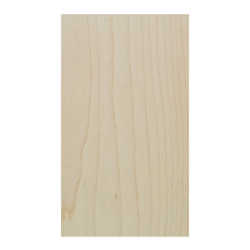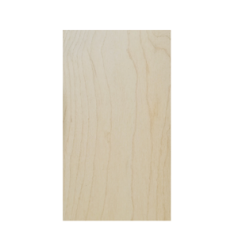Maples

Family: Aceraceae / Sapindaceae - Order: Sapindales - Class: Magnoliopsida
Scientific name: Acer Sp.
Trade name: Maple / Acer
Also
known as Maple Sp. / Acer Sp.
Origin:
United States of America, Canada,
Central America, All Europe, and Asia.
Instrumental
uses:
Guitar back and sides, Soundboards, Guitar
necks, fingerboards, bridges, head plates, peg heads and bindings.
Tonal
properties:
For
guitar classical, acoustic or electric guitars there are few on the favorite
choice by ocidental luthiers:
-
Black Maple - (Acer nigrum)
As tonewood:
The taptone is very similar in all
hard maples; very loud sounding with tight and defined, overall bright tone and
very well balanced on all notes. Produces a
great guitar with a very punchy sound and good projection.
Used on guitar necks it is incredibly punchy and has great note separation. It
doesn’t have the deep and sustained sound of rosewoods but sounds very
energetic and musical.
Can be easy to work but may be hard to sand but turns, glues well and finishes very well.
Also known as Black Sugar Maple it is a Hard Maple type.
Can be found more often on the Mid
East and North East of the United States; southeast of Canada.
Is
a moderate dense wood but stiff and hard wood, depending on the place where it grows, with
an average
dried weight nearly
of 40
lbs/ft3 or 640 kg/m3.
CITES status
is unrestricted.
Is reported on
the IUCN Red List as Least Concern.
-
Silver Maple (Acer
saccharinum)
As tonewood:
Is often used for guitar
soundboards but also can be used as acoustic guitars back and sides and
electric guitar bodies as well.
The tap tone is likely Hard Maple
type even this one is softer, all the spectrum is there, with a more relaxed
bass and less present brilliant tone. Got a very good note separation.
Easier to work, glues
well and finishes very well.
Is a softer maple. Can be found more often on
Northeastern United States.
The tree aspects are similar to
other maple trees.
It
is a moderate soft wood but stiff and very resistant. Depending on the place where it grows, with
an average
dried weight nearly
of 33
lbs/ft3 or 530 kg/m3.
CITES status
is unrestricted.
Is reported on
the IUCN Red List as Least Concern.
-
Hard Maple
/
Rock Maple (Acer saccharum)
As tonewood:
Is often used for electric guitar
necks, also with classical or acoustic guitar necks. Can be used in acoustic
guitars back and sides and electric guitar bodies as well. Also is a very good
wood for bindings and purfings, peg heads, head plates and inlays.
The tap tone is likely Hard Maple
type. This one has a very loud sound, a very punchy sound. Very high basses
with well defined and crystal highs, extraordinary note separation with all the
spectrum on the range, very present and brilliant tone. Great sound projection.
Can be easy to work, sanding can be difficult but turns and glues well and finishes very well.
Can be found more often in
Northeastern North America and Eastern Canada. The tree reaches the same
measures of Black maple. This is the hardest of the Maples.
The tree aspects are similar to
other maple trees. Hard Maple wood has a very fine texture, is hard, heavy,
stiff, dense and very resistant. Average
dried weight nearly of 44 lbs/ft3 or 705 kg/m3.
CITES status
is unrestricted.
Is reported on
the IUCN Red List as Least Concern.
-
European maple (Acer pseudoplatanus) also known as Sycamore maple and German maple.
As tonewood:
Father of all string instruments of
Ocidental music history. Depending on the part of the boards can be slightly softer or highly hard and
stiff, can be used as back and sides and soundboards for several types of
string instruments, classical and acoustic guitar as well of course.
This so tonal wood sounds very loud
with a great presence, big sound projection, extremely punchy and very well
balanced over all frequency range spectrums. Typical high basses and and an
extraordinary note separation overall.
Easy to work, sawing and sanding can be difficult but turns and glues well and finishes extraordinary well.
It´s a native of Central Europe and Western
Asia. Also in high lands of southern Europe (Portugal, Spain, France, and
Italy). Can also be found as the famous and ancient European Flamed Maple. The
color of the wood is similar to other maple kinds and the grain is generally
straight but is also usual to be wavy or curly. With an extraordinary fine
texture. Average
dried weight nearly of 38
lbs/ft3 or 615 kg/m3.
CITES status
is unrestricted.
Is reported on
the IUCN Red List as Least Concern.
The Maple family is wide, with nearly 130
species and can be also classified by wood type in two big classes: Soft and
Hard maples. In many cases this classification is also influenced by the specie
itself or the specific conditions of growth that can turn the wood fibers
harder and stiffer, all without talking about heartwoods or sapwoods.
In
general all Maple have the sapwood color from golden white, to a light brown
cream color, sometimes with a slight reddish gold pattern. The heartwood is
usually a light reddish brown with white golden patterns. Another aspect for
the hardness and stiffness of maples is
the way of growing and type of soils or land conditions and several other factors
that can affect the figure in grain on the beginning of the growing process or
on the decay of a tree, also if got injuries caused by insects leaving marks or
causing the origin of fungus during the growing. Here we can classify the final
result of these natural factors by the types (not species) of figured maple
like:
-
Ambrosia Maple - caused by insects that bring a few fungii that discolor
marking parts of the wood giving a very decorative pattern and can be found on
hard and soft maples.
- Birdseye maple - Figured wood occasionally found in Acer saccharum,
also called as hard maple when unfavored growing factors creat highly figured
patterns similar to small brighter or darker eyes.
- Curly Maple / Flamed Maple / Tiger Maple: Figured wood that occurs more often in soft maples,
even though it can be seen in hard maples. The grain gets curled by anomalies
in cells causing wood fibers to grow distorted, more evident when the trees are
very large and long. Very evident when boards are quatersawn.
- Spalted Maple- As with Ambrosia, created by fungus of several
types, with combinations of darker parts surrounding the growing of new wood
parts with much lighter and bright color. Likely Ambrosia maple this can happen
on soft or hard maples.
- Quilted Maple- As with Curly Maple can be seen on soft but also can
be seen on hard Maples mostly the Bigleaf Maple. There are several grades of
quilted maple. From the root to middle growth of the tree it can be found, and
also the type of cut made; mostly quatersawn.
The biggest part of acer species are native to
Asia, with a number also appearing in Europe, northern
Africa, and North America. Only one specie, Acer laurinum, extends to the
Southern Hemisphere. Unfortunately and dramatically there is one already
extinct North American native, the Acér Chaneyi. A few other Maples are
reported by IUCN as Critically Endangered and Endagered respectively:
Acer undulatum native from Turkey, Acer
skutchii (Álamo plateado) native from Guatemala and Mexico, Acer binzayedii
also native to México and Acer pentaphyllum native from China. reported as
endangered: Acer chiangdaoense, Acer griseum, Acer mazandaranicum, Acer
pseudowilsonii, all native from China.
Some others reported as Vulnerable, like:
Acer fenzelianum,
Acer miaotaiense, Acer tibetense native from
China, All native from China. Acer takesimense and Acer okamotoanum
native from Republic of Korea. Acer osmastonii native from India and Acer
divergens native from Turkey.
All other species are
not reported. Few reported as Least Concern
as Acer granatense (Spanish Maple), Acer saccharine (Silver maple), Acer
rubrum (Red Maple), Acer campestre ( Field Maple), Acer heldreichii (Mountain
Maple), Acer opalus (Italian Maple), Acer platanoides (Norway Maple) and Acer nigrum (Black Maple) for example.
In general CITES status
is still yet unrestricted.
Gallery Photos




